-
BackX
-
Components
-
-
Category
-
Semiconductors
- Diodes
- Thyristors
-
Electro-insulated Modules
- Electro-insulated Modules | VISHAY (IR)
- Electro-insulated Modules | INFINEON (EUPEC)
- Electro-insulated Modules | Semikron
- Electro-insulated Modules | POWEREX
- Electro-insulated Modules | IXYS
- Electro-insulated Modules | POSEICO
- Electro-insulated Modules | ABB
- Electro-insulated Modules | TECHSEM
- Go to the subcategory
- Bridge Rectifiers
-
Transistors
- Transistors | GeneSiC
- SiC MOSFET Modules | Mitsubishi
- SiC MOSFET Modules | STARPOWER
- Module SiC MOSFET ABB’s
- IGBT Modules | MITSUBISHI
- Transistor Modules | MITSUBISHI
- MOSFET Modules | MITSUBISHI
- Transistor Modules | ABB
- IGBT Modules | POWEREX
- IGBT Modules | INFINEON (EUPEC)
- Silicon Carbide (SiC) semiconductor elements
- Go to the subcategory
- Gate Drivers
- Power Blocks
- Go to the subcategory
- Electrical Transducers
-
Passive components (capacitors, resistors, fuses, filters)
- Resistors
-
Fuses
- Miniature Fuses for electronic circuits - ABC & AGC Series
- Tubular Fast-acting Fuses
- Time-delay Fuse Links with GL/GG & AM characteristics
- Ultrafast Fuse Links
- Fast-acting Fuses (British & American standard)
- Fast-acting Fuses (European standard)
- Traction Fuses
- High-voltage Fuse Links
- Go to the subcategory
- Capacitors
- EMI Filters
- Supercapacitors
- Power surge protection
- TEMPEST emission revealing filters
- Surge arrester
- Go to the subcategory
-
Relays and Contactors
- Relays and Contactors - Theory
- 3-Phase AC Semiconductor Relays
- DC Semiconductor Relays
- Controllers, Control Systems and Accessories
- Soft Starters and Reversible Relays
- Electromechanical Relays
- Contactors
- Rotary Switches
-
Single-Phase AC Semiconductor Relays
- AC ONE PHASE RELAYS 1 series| D2425 | D2450
- One phase semiconductor AC relays CWA and CWD series
- One phase semiconductor AC relays CMRA and CMRD series
- One phase semiconductor AC relays - PS series
- Double and quadruple semiconductor AC relays - D24 D, TD24 Q, H12D48 D series
- One phase semiconductor relays - gn series
- Ckr series single phase solid state relays
- One phase AC semiconductor relays for DIN bus - ERDA I ERAA series
- 150A AC single phase relays
- Rail Mountable Solid State Relays With Integrated Heat Sink - ENDA, ERDA1 / ERAA1 series
- Go to the subcategory
- Single-Phase AC Semiconductor Relays for PCBs
- Interface Relays
- Go to the subcategory
- Cores and Other Inductive Components
- Heatsinks, Varistors, Thermal Protection
- Fans
- Air Conditioning, Accessories for Electrical Cabinets, Coolers
-
Batteries, Chargers, Buffer Power Supplies and Inverters
- Batteries, Chargers - Theoretical Description
- Modular Li-ion Battery Building Blocks, Custom Batteries, BMS
- Batteries
- Battery Chargers and Accessories
- Uninterruptible Power Supply and Buffer Power Supplies
- Inverters and Photovoltaic Equipments
- Energy storage
- Fuel cells
- Lithium-ion batteries
- Go to the subcategory
-
Automatics
- Spiralift Lifts
- Futaba Drone Parts
- Limit Switches, Microswitches
- Sensors, Transducers
-
Infrared Thermometers (Pyrometers)
- IR-TE Series - Water-proof Palm-sized Radiation Thermometer
- IR-TA Series - Handheld Type Radiation Thermometer
- IR-H Series - Handheld Type Radiation Thermometer
- IR-BA Series - High-speed Compact Radiation Thermometer
- IR-FA Series - Fiber Optic Radiation Thermometer
- IR-BZ Series - Compact Infrared Thermometers
- Go to the subcategory
- Counters, Time Relays, Panel Meters
- Industrial Protection Devices
- Light and Sound Signalling
- Thermographic Camera
- LED Displays
- Control Equipments
- Go to the subcategory
-
Cables, Litz wires, Conduits, Flexible connections
- Wires
- Cable feedthroughs and couplers
- Litz wires
-
Cables for extreme applications
- Extension and Compensation cables
- Thermocouple cables
- Connection cables for PT sensors
- Multi-conductor wires (temp. -60C to +1400C)
- Medium voltage cables
- Ignition wires
- Heating cables
- Single conductor cables (temp. -60C to +450C)
- Railway cables
- Heating cables Ex
- Cables for the defense industry
- Go to the subcategory
- Sleevings
-
Braids
- Flat Braids
- Round Braids
- Very Flexible Flat Braids
- Very Flexible Round Braids
- Cylindrical Cooper Braids
- Cylindrical Cooper Braids and Sleevings
- Flexible Earthing Connections
- PCV Insulated Copper Braids (temp. up to 85C)
- Flat Aluminium Braids
- Junction Set - Braids and Tubes
- Steel Braids
- Go to the subcategory
- Traction Equipment
- Cable Terminals
- Flexible Insulated Busbars
- Flexible Multilayer Busbars
- Cable Duct Systems
- Go to the subcategory
- View all categories
-
Semiconductors
-
-
- Suppliers
-
Applications
- CNC Machine Tools
- DC and AC Drives (Inverters)
- Energetics
- Energy bank
- Equipment and Components for Hazardous Areas [Ex]
- Equipment for Distribution, Control and Telecommunications Cabinets
- HVAC Automation
- Induction Heating
- Industrial Automation
- Industrial Protective Devices
- Machines for Drying and Wood Processing
- Machines for Thermoforming Plastics
- Mining, Metallurgy and Foundry
- Motors and Transformers
- Power Supplies (UPS) and Rectifier Systems
- Printing
- Temperature Measurement and Regulation
- Test and Laboratory Measurements
- Tram and Railway Traction
- Welding Machines
-
Assembly
-
-
Inductors
-
-
Induction devices
-
-
Service
-
- Contact
- Zobacz wszystkie kategorie
Application of ferrite cores in industry

In the industry, the vast majority of equipment is powered by alternating current of varying power and frequency. When we gather a large number of equipment and electrical machines in one room we create the so-called working environment. Each electrical device during operation generates electromagnetic interference, which may adversely affect its own operation and other devices in the environment. Therefore an important aspect in the industrial sector is to protect the working environment against this type of interference.
EMC (Electromagnetic compatibility) is the ability of electronic and electrical equipment to operate properly in a specific environment. The main purpose of ensuring electromagnetic compatibility of devices is to remove the emission of electromagnetic field disturbances, which may adversely affect the performance of equipment in their environment. With the development of technology, there have been many EMC solutions that are implemented in every industrial system.
In this article, we will focus on ferrite filters, which we can most often find on the wiring of electrical and electronic equipment. You will learn what ferrite cores are and how they work, where these solutions are used and how to choose the right filter for your application.
What is a ferrite filter and what is it used for?
A ferrite filter acts as an interference suppression choke. Ferrites are materials composed of iron and carbon in a small percentage composition (about 0.01 - 0.03%). These materials exhibit ferromagnetic properties, so-called self-magnetizing states. In short, ferrite cores are passive electronic components that can attenuate high frequency signals on power lines.
The filters are typically installed around a pair of power or ground lines that are directly connected to an end device such as a computer. Ferrite filters operate according to Faraday's law - a magnetic core around a conductor induces a backward electromagnetic field in the presence of a high-frequency signal, suppressing disturbances due to alternating current flow. Such cores are able to prevent sudden changes in the current supplying the device.
How to select ferrite filters?
Ferrite cores are selected for a specific AC current value. An improperly selected damping element can be damaged by higher amperage values. An additional factor that affects the proper operation of cores is temperature. As temperature increases, the current rating decreases. As a result, the ferrite may not sufficiently suppress the EMI generated.
The rated current can also affect the impedance value of the ferrite. With increasing current, the ferrite core may become saturated, resulting in a loss of its inductance. Saturation, at high enough current, can significantly reduce its impedance.
When choosing a ferrite filter, you should pay attention to its specification. The filters are usually manufactured in the form of ferrite stones enclosed in plastic housings of various shapes or in the form of rings. The first of them are fastened to the electric cable, so we should know the diameter of the cable to know what filter will be appropriate. In the case of rings, the cables are wound around them.
Filters help stop interference from a specific frequency range. The solution should be chosen in such a way that for its resistive band there is the frequency you want to remove. This should be done very carefully, because even small variations from this value can produce unsatisfactory results. Before selecting, it is also a good idea to look at the impedance curves of a given core in relation to its load. This way you will be able to make sure that your core will work without impedance loss due to saturation.
By nature, ferrite cores are high frequency resistive elements. When installing a ferrite filter you need to think about voltage drops and proper dissipation of generated heat. This can be especially useful when looking for a solution for industrial electronics.
Manufacturers of ferrite components usually provide all documentation and technical information about their products, which will help in selecting a solution. If a problem arises during selection or not everything in the documents is clearly presented, you can always contact the manufacturer or distributor for assistance.
Where do we use ferrite filters?
We use ferrite filters wherever there is electromagnetic interference to be eliminated. Most cores are also used in the manufacture of specific devices to remove interference that may occur within them. Some of the most common uses of ferrite filters in industry include:
- Analog and digital data transmission e.g. computer and other IT equipment cables, cash register cables, automation circuits;
- Industrial electronics, resonant circuits and microprocessor circuits;
- Production of transformers, power supplies, inverters.
Related products
Related posts
 Now available – DC/DC converters from PREMIUM
Now available – DC/DC converters from PREMIUM
 New release in DACPOL lighting for lathes – Kira covers
New release in DACPOL lighting for lathes – Kira covers




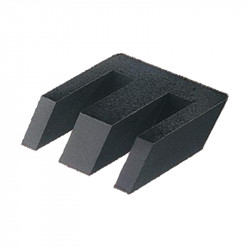
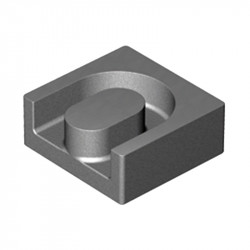
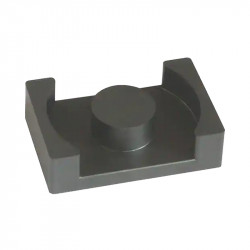
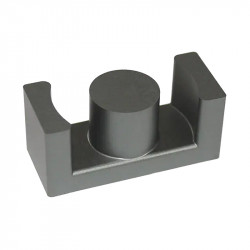
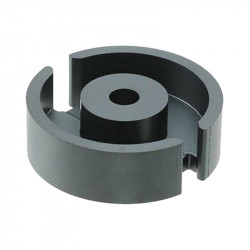
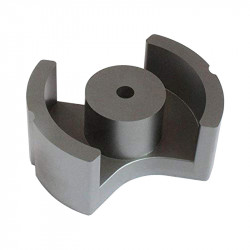
Leave a comment